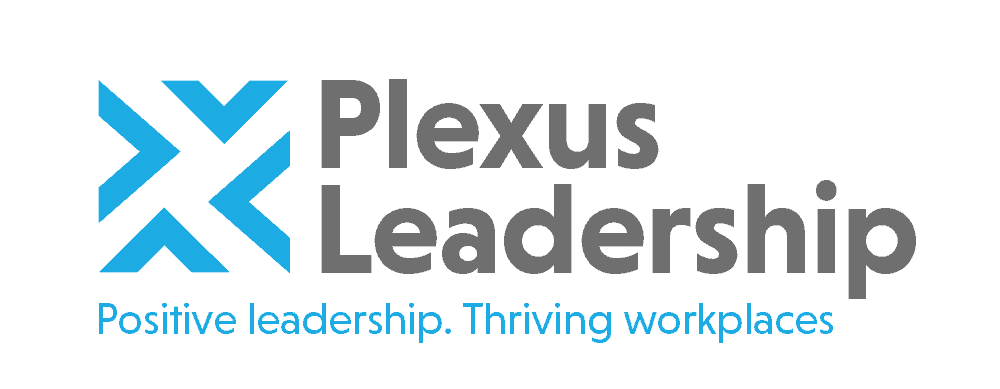Formulaic, time-consuming, and demotivating! It is no surprise that two-thirds of organizations feel the current approach to appraisals is in desperate need of reinvention. Many appraisal processes are a disheartening experience for managers and employees alike. A heavy emphasis on top-down feedback and discussions around overcoming “performance gaps” means the process often leaves talented employees feeling under-valued, frustrated, and demotivated. Many managers dread the process, as they see how it undermines trust and strong connections with their people.
The bureaucracy and many drawbacks associated with traditional appraisal processes has driven a growing number of companies to ditch performance appraisals altogether, a choice that can be just as detrimental as a poorly designed appraisal system.
When designed and implemented effectively, a performance appraisal system has the potential to align and motivate people around a common purpose, accelerate learning and development, improve performance, and unlock innovation and future growth.
So, what can HR and managers do to banish appraisal blues and transform the process to ensure it is delivers maximum value in the new world of work?
1. Ensure goal setting is a two-way, agile process
Without clearly prioritized and achievable goals, employees can rapidly fall into a demotivating tailspin. This scenario can easily be avoided by effective goal setting. As a rule of thumb, we recommend no more than three priority goals for each person to focus on in a 3-month period. We refer to this is the “3 x 3 goal-setting approach”.
Aligning goal setting with the overall purpose of the company, as well as the aspirations of individuals, is vital to ensure people are strongly committed to their goals and understand how they can make a valuable contribution to the organization’s success. Goal setting should always be a two-way process and take account of the strengths, values, and potential of people. It is important to stretch people beyond their comfort zone, as employees who are not empowered and challenged frequently become demotivated, complacent, or disengaged from their work.
An agile approach to goal setting is paramount in the fast-changing, unpredictable world we are living in. Managers and employees should regularly discuss and review goals to take account of ever-changing business realities and market conditions. Regular adaptation of goals and priorities where necessary will minimize time wastage and loss of focus arising from irrelevant and ambiguous goals.
2. Get rid of the damaging “sandwich approach”
The so-called “sandwich approach” has, for many decades, been regarded as the best way for managers to conduct appraisal dialogues and has been strongly advocated by many HR business partners and management trainers. This method is deeply flawed and needs to be abandoned. Intended to soften the impact of negative feedback by placing it between a positive opening and closing statement, all this does is shift employee attention to the wrong takeaway messages. Strong performers will hear mainly the negative messages and leave the meeting feeling demotivated about all the areas where they are underperforming. Poor performers, on the other hand, will focus mainly on the positives and leave the meeting with a rose-coloured view of their performance.
As an alternative, we recommend the following:
• For solid and top performers, focus mainly on the person’s strengths, successes and how they can leverage these in future to strengthen their performance and results.
• For underperformers, communicate exactly what the performance shortfalls are and what the person needs to do to improve. Be honest and direct so the individual is clear about what is expected and the consequences of continued under-performance. This should always be done is a constructive, fair and supportive manner. Click here for more guidance on this.
3. Shine a spotlight on strengths and successes
The typical appraisal process we see in organizations is focused heavily on fixing weaknesses and closing performance gaps. Unsurprisingly, this deficit-based approach undermines efforts to improve performance, motivation and wellbeing. To facilitate progress, performance dialogues should place much more emphasis on the positive factors that enable people to feel safe and be at their best — their strengths, successes, personal aspirations and enabling conditions (including an inclusive, supportive and encouraging team environment).
For employees who meet or exceed performance standards, strengths-based appraisals can generate impressive results. According to a 2005 Corporate Leadership Council study involving 135 organisations, focusing on personality and performance strengths during performance conversations boosted performance by nearly 40%*.
To implement this approach, managers need to shift their mindset to a more appreciative one. They also need to be better at spotting and helping people optimize their strengths and skills, acting as coaches and empathic listeners rather than critical judges. Finally, they need to praise, encourage, and recognize effort and achievement, as this builds confidence and creates motivation for improvement, perseverance, and personal growth.
To shift the performance dialogue to a two-way, coaching-oriented one, managers should ask powerful open questions such as:
1. What do you think you have done particularly well?
2. What are the most energizing aspects of your work? And the least energizing?
3. What would you like to learn to optimize your strengths and performance?
4. What are your challenges or blockers? What can you do to overcome these that is within your control and influence?
5. What support will you need to succeed? How will you get this support?
6. What new ideas and thinking can you bring to help the team succeed?
4. Change the way you think about weaknesses
A greater focus on people’s strengths and successes does not mean poor performance is overlooked. In fact, a strengths-based approach can provide significant breakthroughs in tackling weaker areas. When implemented properly, a strengths-based approach introduces managers and employees to a major source of perceived weaknesses in the workplace – overdone strengths.
Overdone strengths occur when a person’s natural strengths are used in excess or at the wrong time and this undermines performance. For example, attention to detail used to the extreme can become perfectionism or fastidiousness and self-confidence can become arrogance or hubris. Studies show that overdone strengths are a major source of performance and communication problems and correcting them can result in significant performance gains. In our experience, helping people understand their overdone strengths, and the underlying causes, enables people to see what they have previously regarded as weaknesses in a completely different light. This insight reduces defensiveness and empowers people to take positive action to change their overdrive behaviours and habits.
5. Encourage a culture of feedback
In the same way that elite sports people need high quality and timely feedback to improve and typically get this from multiple sources (coaches, physios, cameras, fellow athletes, etc.) employees too require multi-rater feedback in order to learn and improve. This should be provided by a wide range of stakeholders beyond the person’s manager such as co-workers, project leads, superiors, and customers.
There are a growing number of performance management webapps and software solutions that can facilitate real-time co-worker and stakeholder feedback. However, rudimentary email or conversation-based collection of feedback can be equally effective. As a minimum, we recommend that the employee’s manager collects feedback from key stakeholders before quarterly performance dialogues or at the end of key projects. The type of questions that should be asked include:
• What has the person done particularly well?
• What specific actions will help the person improve his/her relationships?
• What specific actions will help the person improve his/her performance?
To promote a thriving feedback culture, employees should be reassured that the feedback process is fair and confidential, and the feedback will be used to help them improve, rather than penalize them. Employees also need to see that their manager and top management value feedback and are open to feedback themselves to trust and get fully behind such as culture.
To banish appraisal blues and create a highly effective performance management system, organizations should train and empower managers to set purposeful and focused goals in regular two-way dialogues, pave the way for people to be at their best by guiding, coaching and supporting them, praise and recognize progress and promote high quality feedback cultures that accelerate learning, improvement and adaptation.
To read a related guest blog by one of our European partners, Kitty Schaap, founder of CoAchieve, click here.
*Corporate Leadership Council (2005). Improving Talent Management Outcomes Research Paper.
Other Posts

About the Author
James Brook
Founder and MD | Leadership Consultant | Organizational Psychologist
James is a leadership consultant, organizational psychologist and executive coach. He has over 25 years’ experience working with leaders, teams and organizations globally to optimize their performance, talent and future success. He specializes in positive leadership, thriving workplaces, collaboration and influencing, organizational change and transformation, accelerating innovation and coaching executives and leaders in innovative sectors including Tech, Digital, E-commerce and Life Sciences.
Before setting up Plexus Leadership, James held leadership roles in HR and Talent Management in the UK and abroad with companies such as NatWest, Yahoo! and Novo Nordisk Pharmaceuticals. After this, he founded and led several talent and leadership consulting and assessment businesses, including Strengthscope®, an online strengths assessment and development business serving a wide range of UK and global clients. James grew this venture into a global market leader before selling the business in 2018.
James has supported, advised and coached leaders and teams globally across diverse industries and geographies. Clients he has worked with include Allen & Overy, Commvault, Equinor, Facebook, GSK, Hilton, John Lewis, Novartis Pharmaceuticals, NHS, Oracle, Sainsbury’s, Swiss Re, Tesco, Takeda Pharmaceuticals, WSP and Yahoo!.
James has a Master’s in Organizational Psychology, an MBA, an Advanced Diploma in Executive Coaching and a Harvard Business qualification in Sustainable Business Strategy. He is a member of the Institute of Directors, the Association of Business Psychologists and a Fellow of the Chartered Institute of Personnel and Development (FCIPD). He is currently undertaking a PhD in Organizational Psychology examining the start-up experiences of Tech and Digital entrepreneurs.
James is a regular contributor and speaker on leadership, coaching, innovative talent management and the future of work. His most recent book, Optimize Your Strengths, explores how leaders can create thriving workplaces by inspiring and supporting people to optimize their potential and teamwork to deliver breakthrough results.





